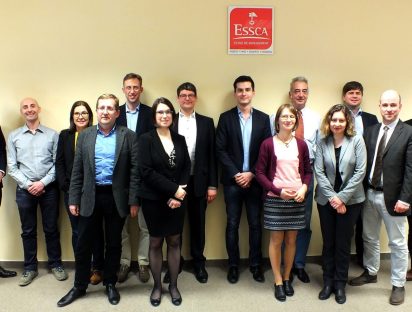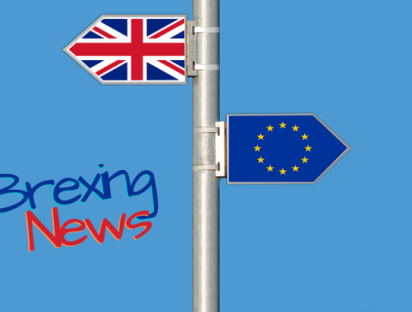Invited by the Maison de l’Europe of Angers and the Maine-et-Loire, Antonella Forganni recently gave a public lecture on Altiero Spinelli in the framework of a series of events organised on the occasion of the Italian EU presidency in the second semester of 2014. Below, a summary of the lecture she gave in the amphitheatre of the Espace Culturel de l’Université d’Angers.
Today Altiero Spinelli is recognised as one of the founding fathers of European integration, together with the likes of Robert Schuman and Jean Monnet. But first and foremost, he was a person who dedicated his life to the fight against totalitarianism and for peace. Altiero Spinelli is born in Rome in 1907. When Mussoloni seized the power in the 1920s he chooses to engage actively in the clandestine anti-fascist movement. In 1927 he is arrested in Milan; when he is liberated ten years later, he is interned in exile on the island of Ventotene, off the Campania coastline. This is where in 1941/42 he writes, together with other exiled political dissidents, a manifesto for a free and united Europe. This document represents the ideological basis for the movement he founds in Milan in 1943. Two years later, he organises the first international federalist congress in Paris, attended and supported by intellectuals like Albert Camus or George Orwell. It is the period of the big debates on the future of Europe. Historically speaking, the concept of European unification is of course a very ancient ambition. Since the Roman Empire, the entire history of Europe may be summed up by the eternal tension between movements of unification (usually by means of military force) and movements of fragmentation. At the end of World War II, the priority was of course reconstruction and economic recovery, but it was just as necessary to create new institutional structures in Europe in order to avoid new conflicts. Two major options were on the table: a form of supranational collaboration between independent states, or the construction of a federal state, the “United States of Europe” promoted by Spinelli. Starting from the pooling of coal and steel production following the plan of Jean Monnet, European integration has taken the road we know now, while the more daring federalist project was discarded. Nevertheless, Spinelli continued to play an active role in fostering the integration of the member states in the framework of the new community institutions, especially in his quality as Member of the European Parliament. According to Spinelli’s thought, the United States of Europe would have allowed to finally leave behind the permanent opposition and competition among nation-states. The fact that nation-states would remain distinct entities on a geographical, economic and military level, maintaining a strong national identity, would, in his view, necessarily lead each country to see the others as competitors, or even enemies. In his manifesto the inevitable transformation of nationalism into a process of domination is described in great detail. In particular, Spinelli highlights the chain reaction which is bound to occur on an international level: whenever one state takes one step further towards an expansionist strategy, the others will follow if only to protect themselves. Moreover, for Spinelli, the constitution of a federal European state is the only way to launch a genuine cooperation with the countries of Asia and America. His visionary lucidity on this issue is striking, as the lack of coordination in foreign policy between member states is today one of the most frequent criticisms addressed to the EU. Some of the elements contained in Spinelli’s project of the “United States of Europe” have in fact been realised in the current structure of the European Union, such as monetary union, the abolition of tariffs on the single market, or the free movement of people. He proposed, however, additional, typically federalist, elements like a joint European army instead of national armies, the direct representation of the citizens in federal assemblies, and a common foreign policy. He also speaks of a common legislation for all member states, but – like in all well-functioning federalist states – with respect for a certain local autonomy in policy-making, which would allow for a flexible articulation of policy and the preservation of regional particularities. Similar propositions are today being promoted by the “Spinelli Group” which has been formed in the European Parliament. Finding inspiration in the Ventotene Manifesto, this group adopted in 2010 a new manifesto as a blueprint for European federalism and reaches out to MEPs and civil society. The objective of the group members is “to place European interest above national interests and make the federalist project advance in their own environment”. Among the promotors, politicians like Guy Verhofstadt, Daniel Cohn-Bendit, Sylvie Goulard, Isabelle Durant, Andrew Duff ou Jo Leinen can be found.
For the Spinelli group, a federal constitution would represent a solution against the current economic and financial crisis. In 2011 the group criticised the Franco-German alliance and its manner of confronting the crisis, pointing out the necessity of conducting a dialogue among all member states on the common interest. In a document from 2012, it also emphasised than a banking and fiscal union would allow to solve problems linked to the Eurozone, and that federal assemblies would put an end to the “democratic deficit” of the EU. In October 2014, members of the newly elected European Parliament relaunched the group for 2014-2019. It remains to be seen whether in this moment of economic and institutional crisis in Europe, the federalist movement will be capable of raising its voice above those of the more extremist and europhobic political groups that have emerged.





